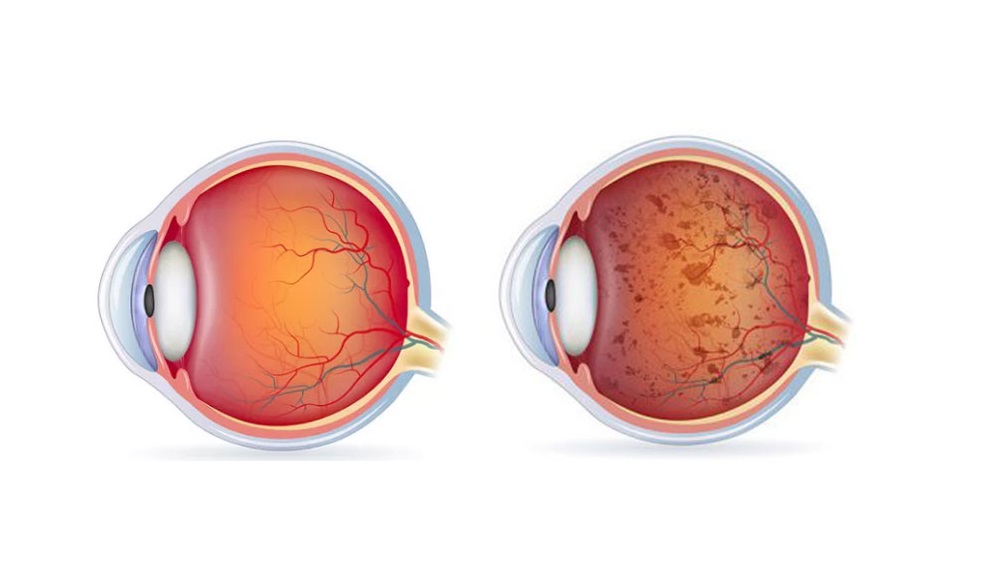
In the intricate tapestry of human genetics, one condition casts a shadow over the world of sight—Retinitis Pigmentosa (RP). This rare genetic disorder leads to progressive vision loss, challenging individuals and their families with its complexity and unpredictability. In this article, we delve into the world of Retinitis Pigmentosa, exploring its causes, symptoms, impact, and the ongoing research efforts to find a cure.
Understanding Retinitis Pigmentosa
Retinitis Pigmentosa is a group of genetic eye disorders that primarily affect the retina—the light-sensitive tissue at the back of the eye. The hallmark of RP is the gradual degeneration of photoreceptor cells in the retina, known as rods and cones, which are responsible for capturing light and converting it into electrical signals sent to the brain.
The degeneration of these cells results in a cascade of vision problems, typically beginning with night blindness and peripheral vision loss. As the condition progresses, individuals may experience tunnel vision, leading ultimately to severe visual impairment or blindness in some cases.
Genetic Complexity
Retinitis Pigmentosa is genetically complex. It can be inherited in various ways, including autosomal dominant, autosomal recessive, and X-linked inheritance. This genetic diversity contributes to the condition’s wide range of symptoms, severity, and onset age.
Common Symptoms
The symptoms of RP can vary significantly among individuals, but some common signs include:
Night Blindness: Difficulty seeing in low-light conditions, especially at night, is often one of the earliest signs.
Tunnel Vision: As the peripheral vision deteriorates, individuals may experience tunnel vision, where they can only see objects directly in front of them.
Decreased Visual Acuity: Over time, central vision may also be affected, leading to a decline in visual acuity.
Loss of Color Vision: Difficulty distinguishing between colors or a shift in color perception may occur.
Difficulty with Contrast: It may become challenging to differentiate objects from their background, particularly in dim lighting.
Impact on Daily Life
The progressive nature of RP can significantly impact an individual’s daily life. Tasks such as reading, navigating unfamiliar environments, and recognizing faces become increasingly challenging. The condition can also limit a person’s independence and participation in certain activities.
Treatment and Research
As of now, there is no cure for Retinitis Pigmentosa. However, ongoing research offers hope for potential treatments and therapies to slow down or halt the progression of the disease. Some current research approaches include:
Gene Therapy: Gene therapy trials are exploring ways to correct or replace faulty genes responsible for RP, potentially halting its progression.
Retinal Prosthetics: Devices like the Argus II Retinal Prosthesis System have been developed to partially restore vision in individuals with advanced RP by bypassing damaged photoreceptor cells and directly stimulating the remaining retinal cells.
Stem Cell Therapy: Researchers are investigating the potential of stem cell therapy to replace damaged or degenerated retinal cells.
Drug Therapies: Several drugs are in development to target specific aspects of RP, such as reducing inflammation or protecting retinal cells from degeneration.
Support and Resources
Coping with RP can be emotionally challenging. Support groups, educational resources, and vision rehabilitation services are available to help individuals and their families navigate the journey. These resources offer valuable information, peer support, and strategies for adapting to life with vision loss.
Retinitis Pigmentosa is a complex genetic condition that presents unique challenges to those affected by it. While there is currently no cure, ongoing research efforts offer hope for future treatments and therapies to slow down or halt the progression of the disease.
Understanding the genetic and clinical aspects of RP is crucial for individuals and their families to navigate this journey effectively. With continued research, advancements in treatment options, and the support of the RP community, there is optimism that the path to improved vision and, ultimately, a cure for Retinitis Pigmentosa may one day be illuminated.




